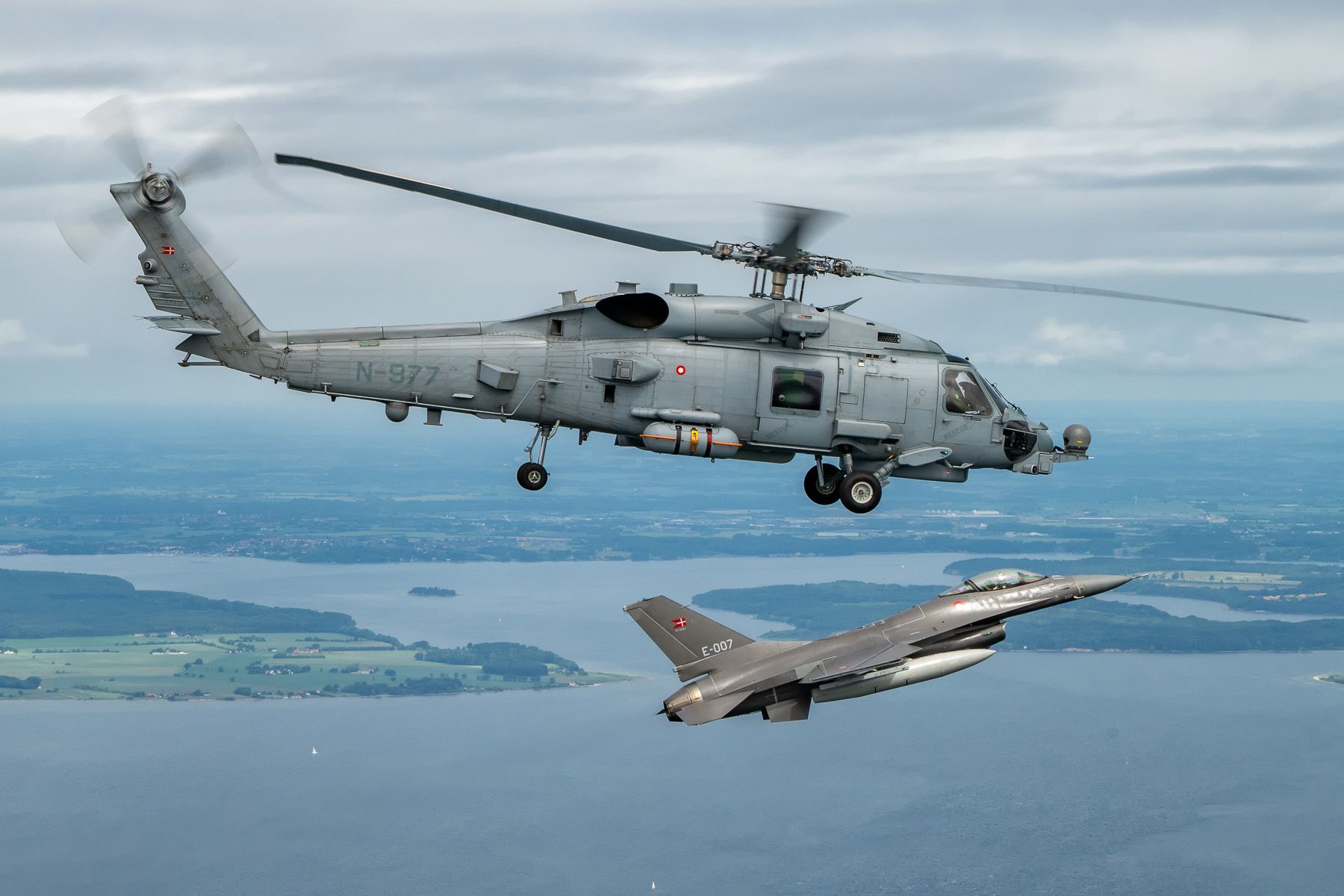Nieuwe alinea
All rotary wing operations of the Royal Danish Air Force are concentrated within the Helicopter Wing Karup. In this report, we present a detailed view on the various squadrons, their tasks and current equipment.
Text and photos: Emiel Sloot
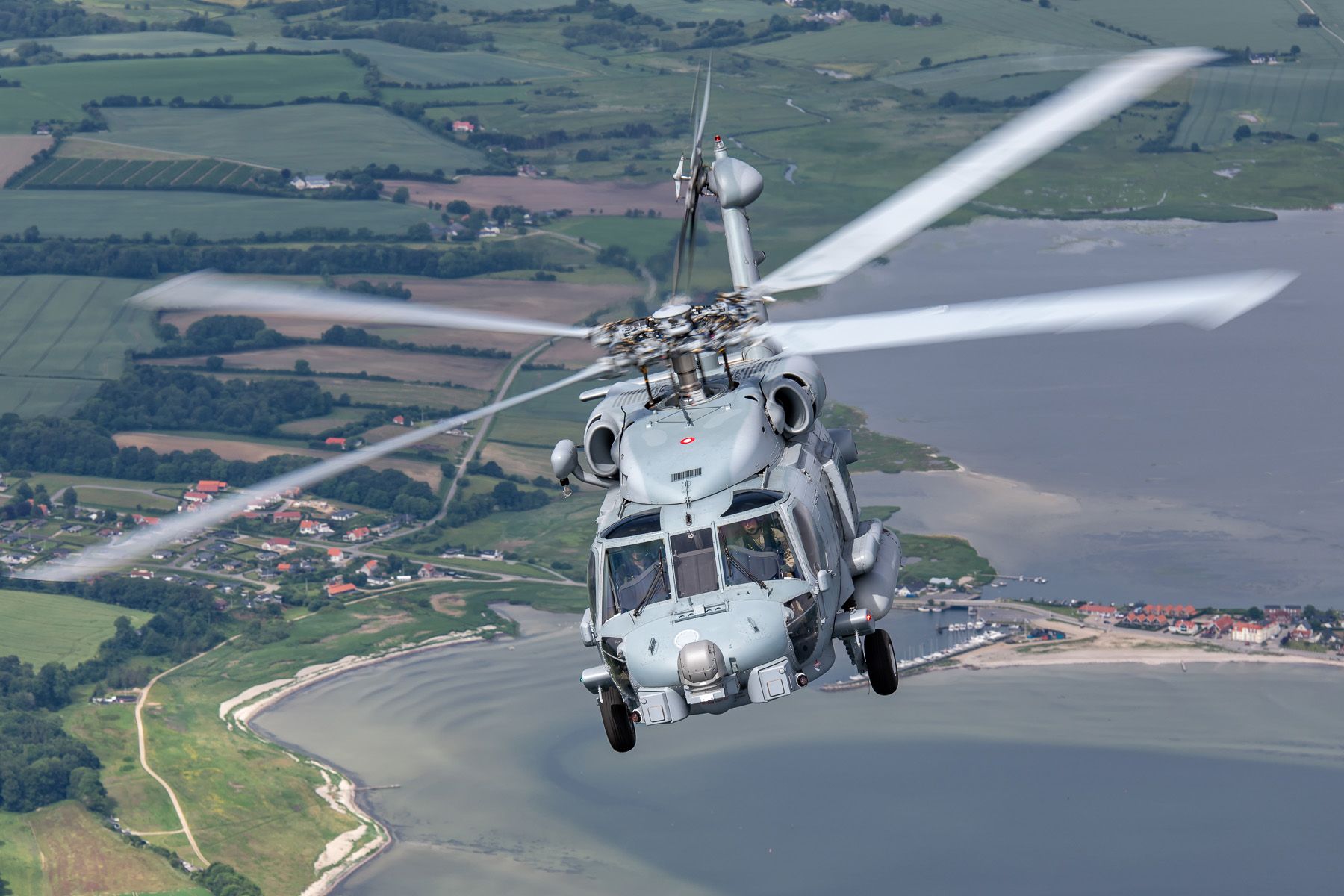
Helicopter Wing Karup
Located in the central part of Jutland, Karup is Denmark’s largest air base. Once the birthplace of most of Flyvevåpnet’s squadrons in the 1950s, jet operations ceased here in 1993 with the retirement of the last Saab Drakens. In the following years, the helicopter units of all three armed forces branches relocated to Karup. Earlier, the Flyveskolen – the air force’s elementary flight school – had transferred to this base due to the closure of Avnø, a tiny station on southern Sealand.
By the turn of the century, it was decided to concentrate all helicopter activities within the air force. As a result, both army and naval air units were deactivated and integrated into re-established air force squadrons. Parent unit for all rotary wing squadrons as well as the Flyveskolen would be the Helicopter Wing Karup. Following a large restructuring programme, this wing was created on 1 January 2006, alongside the Fighter Wing Skrydstrup, the Air Transport Wing Aalborg and the Air Control Wing.
Because of their various origins, the helicopter squadron’s specific tasks are rather diverse. Below, we describe each squadron, followed by a bit of history to top it off.
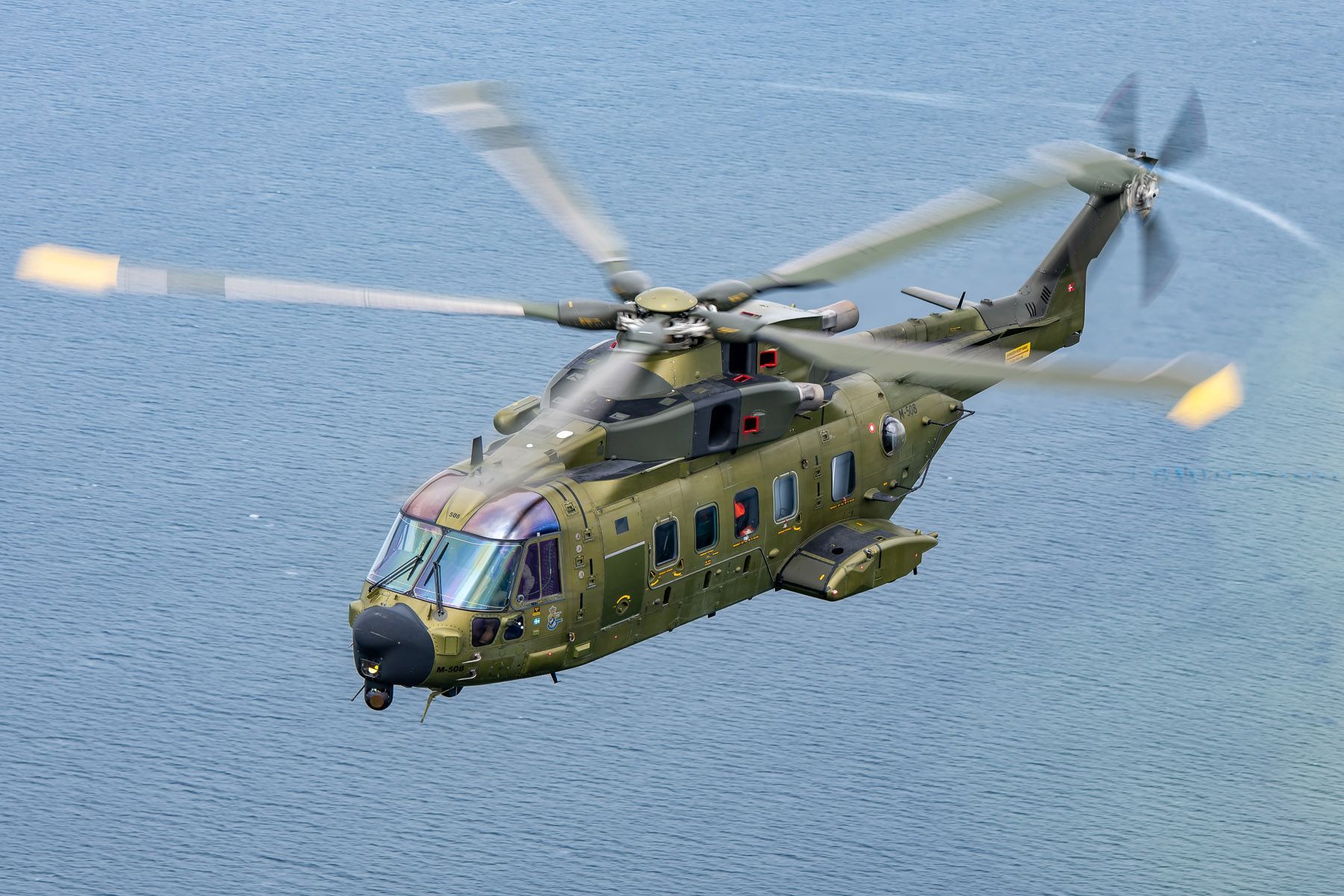
SAR and tactical troop transport – Eskadrille 722
From the early days of its existence, Eskadrille 722 has been responsible for search-and-rescue tasks over and around Denmark. When the squadron came over from Værløse, its previous base near Copenhagen, it brought along their Sikorsky S-61A Sea Kings that were already in service in 1965. While still reliable, their age started to show and a replacement was sought. In 2001, an order worth DKK 3 billion was placed at AgustaWestland for 14 EH101 Merlin helicopters, with deliveries planned from 2006. Beside eight for SAR tasks allowing a one-on-one replacement of the Sea Kings, six troop transport variants were bought to expand the squadron’s tasks. Although marketed by AgustaWestland as AW101 since 2007, the Flyvevåpnet still refers to their Merlins as EH101 – or more specifically, the EH101 Model or Mk. 512 – as they purchased these before the rebranding date. The Danish Mk. 512 model is powered by three Rolls Royce/Turbomeca RTM322 turboshaft engines supplying a maximum output of 1,567kW each. Fitted with BERP III rotor blades, the Merlin has a top speed of 165 knots. With 5,211 litres of fuel, its endurance is just over six hours, and has a range of 1,390km that can be extended to over 1,500km when one engine is shut down. The Mk. 512 has a slightly improved max gross weight of 15,600kg, and is fitted with a Telephonics RDR-1600 search and weather radar.
On 24 April 2007, the first SAR-equipped Merlin officially entered service, in the presence of Danish Queen Margrethe II and Prince Hendrik. Following this event, the Sea Kings gradually retired, with the last one leaving on 30 June 2010. The eight designated SAR Merlins featured yellow panels to distinguish these within the fleet.
During the first years of operation, several issues were encountered which had a detrimental effect on the serviceability of the Merlin fleet. These issues were not only technically such as a large lack of spare parts. A shortage of amongst others maintenance personnel also popped up, especially after the squadron’s move to Karup in the sparsely populated region of central Jutland.
Then, an offer by the United Kingdom brought some relief. Due to a shortage of helicopters for operational tasks, the UK’s Ministry of Defence took over all six Danish troop transport-configured Merlins in 2007. Designated as Merlin HC.3A, these would enter service for training purposes with No.78 Squadron with the Royal Air Force, allowing other Merlins to be released for operational use for e.g. Operation Herrick in Afghanistan. To compensate, the British MoD ordered six brand new Merlin Mk. 512s for Denmark, to be delivered not later than 2009. This swap allowed the Flyvevåpnet to tackle the serviceability issues while waiting for their new helicopters. In the end, the six new Merlins would arrive between 24 July 2009 and 20 January 2010.
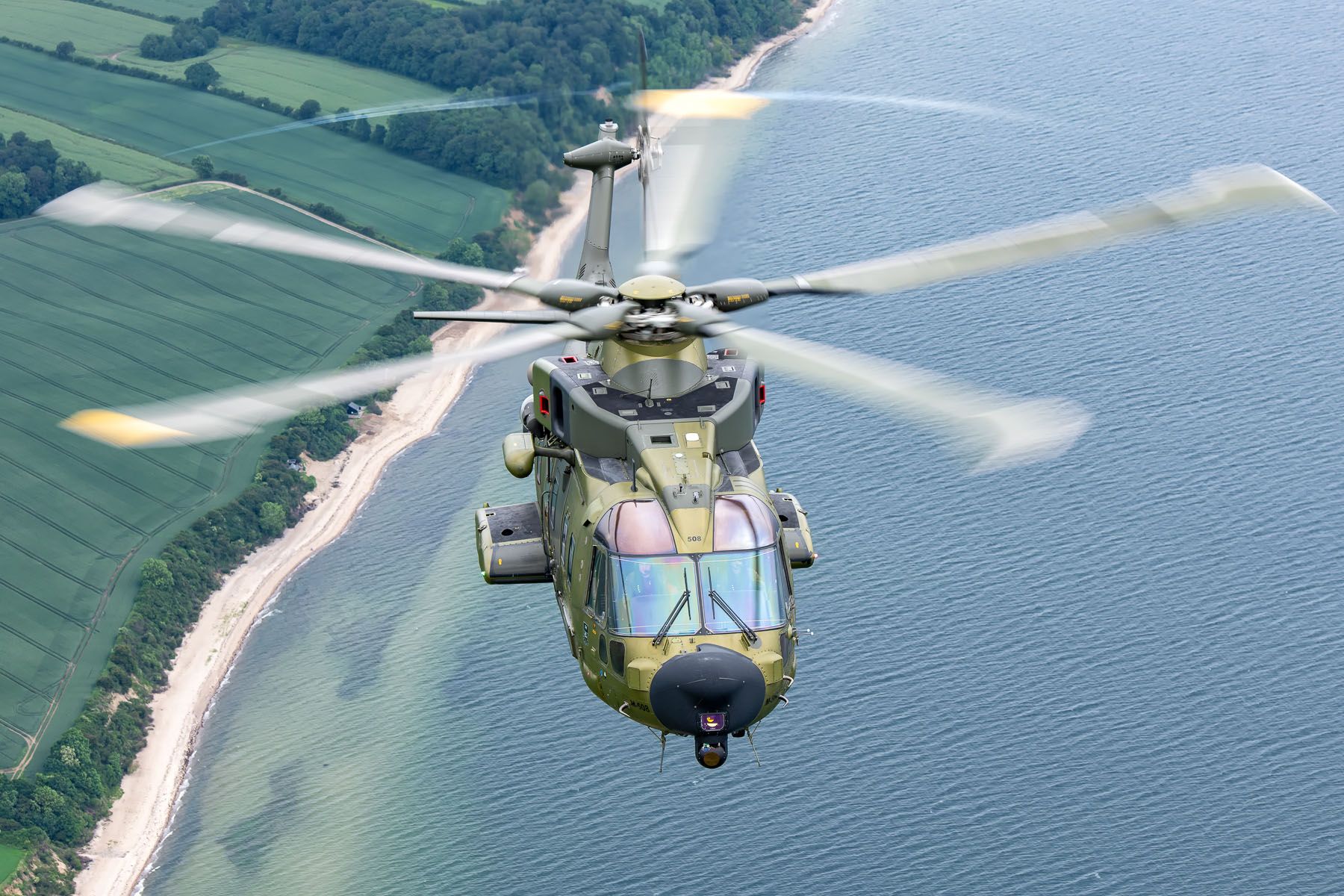
Eskadrille 722 was destined to deploy to Afghanistan in 2012 to contribute to ISAF. The TTT (tactical troop transport) variant features seats to carry 25 fully-packed troops, self-protection equipment and pintle-mounted FN Herstal MAG 7.62mm machine guns. However, to prepare for this and future deployments, the Merlins required some necessary additional modifications, forcing a delay in the departure for Afghanistan.
In September 2012, a contract was signed between the Danish Defence Acquisition and Logistics Organisation (DALO) and Terma. This defence company had also been involved in the electronic warfare architecture when the EH101 was initially acquired. Under this new contract, it would fit the TTT Merlins with an ALQ-213 electronic warfare management system, tactical threat displays, a tactical data unit, as well as pods that integrated with the advanced countermeasures dispensers for flares and missile warning sensors. Test flights with these new systems were concluded in December 2013. Now ready for international operations, Eskadrille 722 went to Afghanistan on 11 July 2014 with three Merlins, a deployment that lasted until 2015.
Unfortunately, while deployed, a mishap occurred. On 11 October 2014 at around 2200 local time, EH101 M-518 was involved in a landing accident following a night training flight from Mazar-i-Sharif. Violent oscillations caused the crew to literally lose their night vision equipment. Now virtually blinded in a dark and dusty environment, they managed to get the helicopter down some 13km east of Mazar-i-Sharif, sustaining severe damage while ending up on its side. Luckily, the six crew members were largely unharmed. Although a costly affair, the helicopter was repatriated and repaired.
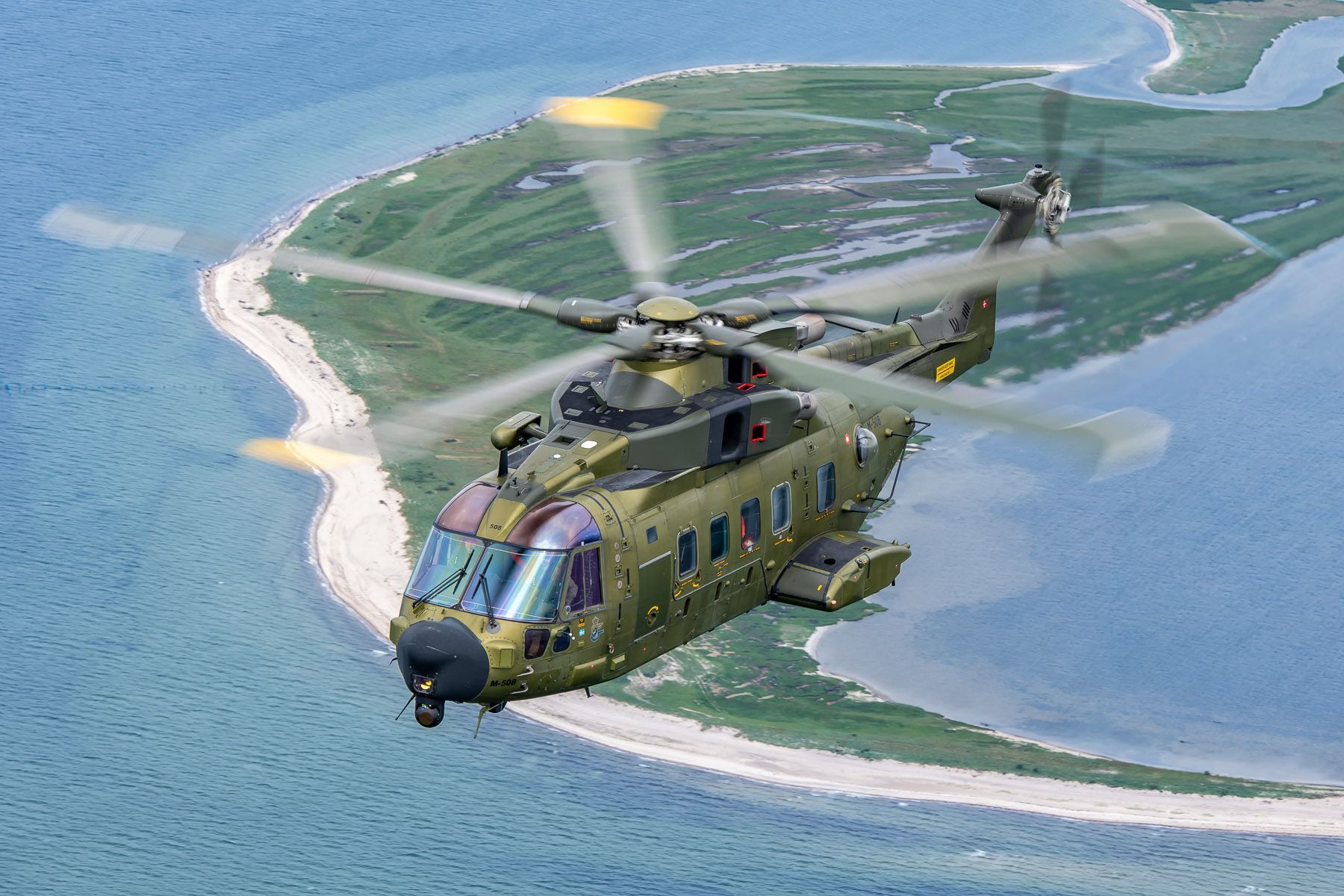
Following its Afghanistan adventure, Eskadrille 722 has deployed abroad on more occasions. From December 2019 till December 2020, two Danish Merlins along with 70 personnel were based at Gao, Mali. This involved Operation Barkhane, a French-lead operation against Islamist groups in the Sahel region. Next, between May 2021 and May 2022, Eskadrille 722 had a detachment of two EH101s at Al Asad air base in Iraq. This was in view of the NATO Mission in Iraq (NMI), a non-combat and capacity building mission which assists Iraq in building more sustainable and effective security institutions and armed forces, in order to prevent the return of ISIS and stabilize the country.
A noteworthy incident took place on 5 December 2022 when Merlin M-514 had to make an emergency landing near Holstebro, following an engine fire. This fire was suppressed by a civilian fire fighting team after landing, and one week later, the helicopter returned to Karup by road being pulled by a tractor. It was successfully repaired.
Let’s return to the squadron’s original role. Three EH101s located at Skrydstrup, Aalborg and Roskilde near Copenhagen are on standby 24/7 throughout the year for sea rescue, support in patient transport or to carry out searches. For these missions, a crew of five plus a doctor are on duty. This crew consists of an aircraft commander, a copilot, a flight engineer also acting as hoist operator, a rescuer/SAR tech, and a system operator that also acts as backup for the rescuer. For sea rescue, a treatment module is on board for the doctor to provide advanced pre-hospital treatment. Beside the three mentioned locations, a fourth detachment can be set up temporarily at the island of Bornholm in the Baltic Sea, if the need arises during e.g. high winds or low sea temperatures. Rescue missions are coordinated from the Joint Rescue Coordination Centre (JRCC) Denmark in Aarhus, run in cooperation between the air force and the navy's operative command.
While initially the Danish EH101s were fitted permanently for their dedicated role (like the yellow-marked search-and-rescue Merlins, Eskadrille 722’s fleet is now flexible as each of their Merlins can be configured for either SAR or as tactical troop transport. The Merlins are also cleared to operate from various vessels of the Danish navy such as frigates and support ships.
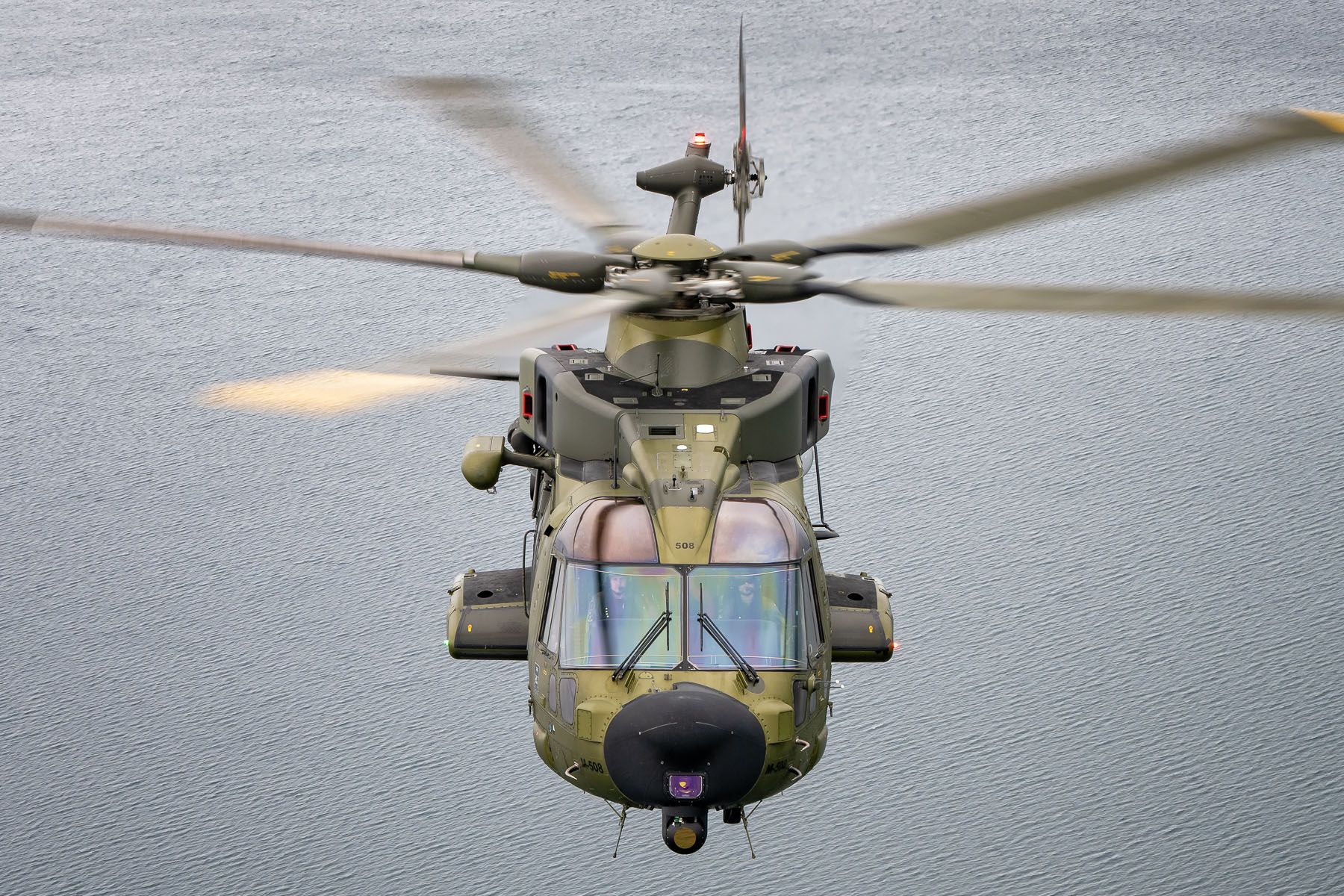
Eskadrille 722 history
As the second squadron of the recently formed Royal Danish Air Force, Eskadrille 722 was established on 8 February 1951 as a light transport unit. Until 1955, it also operated some Supermarine Spitfire HF Mk.IXe fighters. Due to many air accidents in those early days of jet operations, the air force felt the urgent need for a dedicated search-and-rescue squadron, and thus Eskadrille 722 was transformed for this role in 1956. One year later, seven Sikorsky S-55C helicopters arrived.
In 1962, the Danish navy received the first of eight Sud Aviation SE 3160 Alouette IIIs. These helicopters however operated with Eskadrille 722 until 1977, when the Søværnets Flyvetjeneste (Naval Air Service) was established as an authority under the Danish navy.
Then the mighty Sea King arrived following a contract signed on 24 August 1964. Eight Sikorsky S-61A-1s joined the squadron at Værløse near Copenhagen in 1965 and would stay in service for 45 years until these were replaced by the current Merlins. To cover the whole SAR region, detachments were set up at Aalborg and Skrydstrup. One Sea King was lost in an accident on 10 February 1968 during a night search mission, sadly killing its crew. A replacement S-61A-5 was bought in July 1970 to cover for the loss, arriving next summer.
Værløse had been the squadron’s home base since its creation, but this base closed down on 1 April 2004. Eskadrille 722 relocated to Karup to become part of the Helicopter Wing Karup on 1 January 2006. A SAR detachment was then set up at Roskilde, located at the same island as Værløse, to ensure rescue coverage for the eastern part of the country.
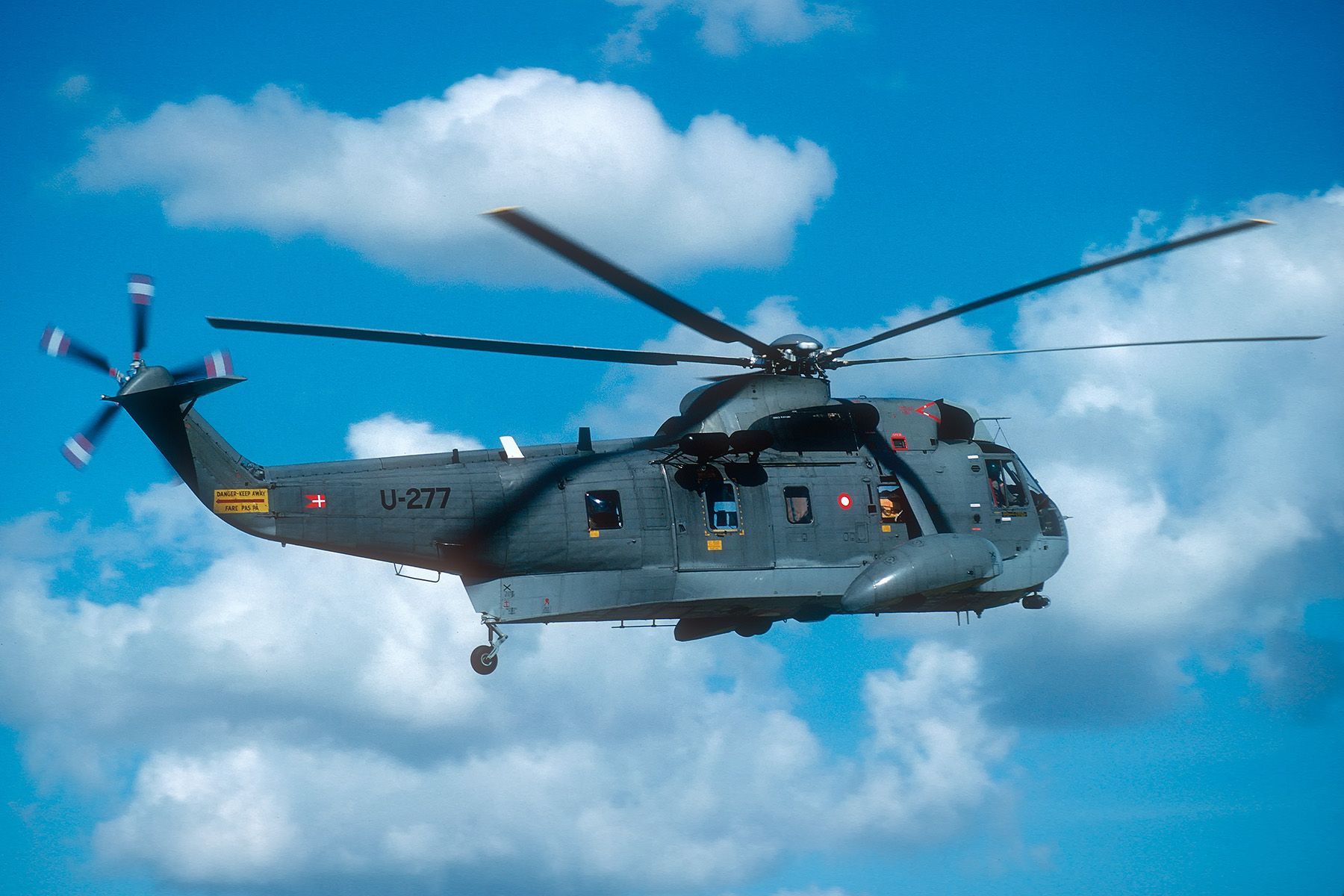
Maritime Support – Eskadrille 723
Focusing on naval and seaborne operations, Eskadrille 723 is equipped with the Sikorsky MH-60R Seahawk. With these modern helicopters, the squadron has a wide spectrum of mainly maritime tasks such as monitoring the vast Danish waters including those surrounding the Greenland and Faroe Island territories, fisheries inspection, naval air transport, sea rescue and sovereignty enforcement, but also involvement in international deployments like anti-piracy operations.
Following the move from Værløse to Karup, the Søværnets Helikoptertjeneste or Naval Helicopter Service brought its Westland Lynx helicopters. While the serviceability of the Lynx worsened due to the lack of available spares, a replacement programme was initiated. On 30 September 2010, a Request for Proposal was issued and several possibilities were evaluated including the NH Industries NH90 NFH, Sikorsky’s S-92 and MH-60R, as well as the AW101 and AW159 Lynx Wildcat both from AgustaWestland. On 22 February 2011, three candidates had made the cut, being the AW159 and MH-60R as well as the Eurocopter AS565MB Panther, the latter oddly popping up while previously unmentioned. Nevertheless, the Panther was eliminated from the shortlist on 17 December 2011.
On 21 November 2012, an order for nine MH-60Rs was announced and after approval by the Danish parliament, the contract covering the construction of the nine airframe was signed in May 2013. Deliveries were planned for 2016-2018 allowing the Lynx to retire in 2017. As this deal only covered the bare airframes, an additional contract worth US$ 115.7 million was awarded to Sikorsky for various add-ons such as installing hydraulic deck lock systems to secure the helicopter to the ship’s landing deck; troop seats; wire strike protection; VOR-class instrument landing systems; an HF radio antenna; and an external life raft pod. The Seahawk is powered by a pair of General Electric T700-GE-401C turboshaft engines producing 1,410kW each. The mission endurance is 3.5 hours, and maximum cruising speed is 140 knots.
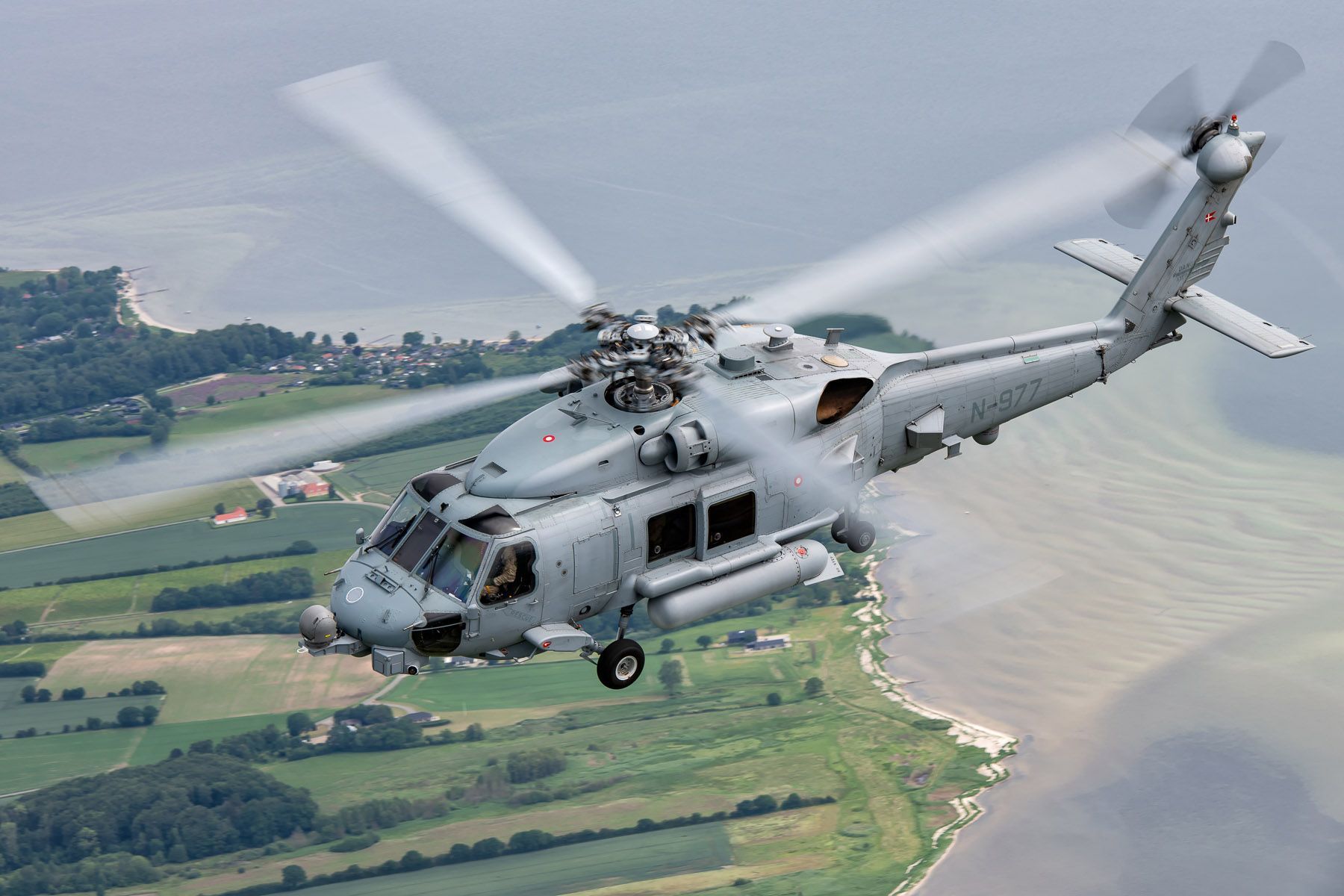
On 22 October 2015, the US Navy accepted the first two mission-ready MH-60Rs slated for Denmark. After an operational evaluation phase, the first three Seahawks arrived at Karup on 11 May 2016, airlifted by two US Air Force C-17As. The last two arrived similarly on 31 July 2018. By then, a former US Navy example had arrived in October 2016 to serve as ground instructional airframe.
While Eskadrille 723 operates out of Karup, it regularly deploys onboard vessels of the Danish navy in view of its maritime tasks. The Iver Huitfeldt-class air defence frigates F361 Iver Huitfeldt, F362 Peter Willemoes and F363 Niels Juel can each carry a single MH-60R. The four Thetis-class patrol vessels F357 Thetis, F358 Triton, F359 Vædderen and F360 Hvidbjørnen are planned to be replaced from 2025. Until then, these can carry a single helicopter, primarily tasked to protect the waters around Greenland and the Faroe Islands. Three Knud Rasmussen-class patrol vessels feature a helicopter deck.
Both Absalon-class frigates F341 Absalon and F342 Esbern Snare were reclassified as anti-submarine warfare frigates in 2020. As such, they can house up to two Seahawks. The Danish Defence Acquisition and Logistics Organisation (DALO) has procured sensors and torpedoes for the MH-60R’s additional role. This acquisition include nine AN/AQS-22 sonar systems, some 600 AN/SSQ-36/53/62 sonobuoys, sonobuoys launchers and a number of Mk 54 lightweight torpedoes. The package also includes crew and technicians training, support equipment, spare parts and an update for the Seahawk simulator. As the Danish Seahawks are already pre-equipped for sonar equipment and torpedoes, the actual modification to the airframes is limited and primarily includes a software update. All systems and services have been acquired from the US Navy through the US Foreign Military Sales (FMS) programme. The corresponding contract valued at some US$ 200 million was awarded on 28 February 2020. Training of Danish crew and technicians is facilitated by the US Navy while the update of the Seahawk simulator should have been completed by 2022. The mentioned torpedoes and ASW equipment were subsequently planned to be delivered between 2023 and 2026.
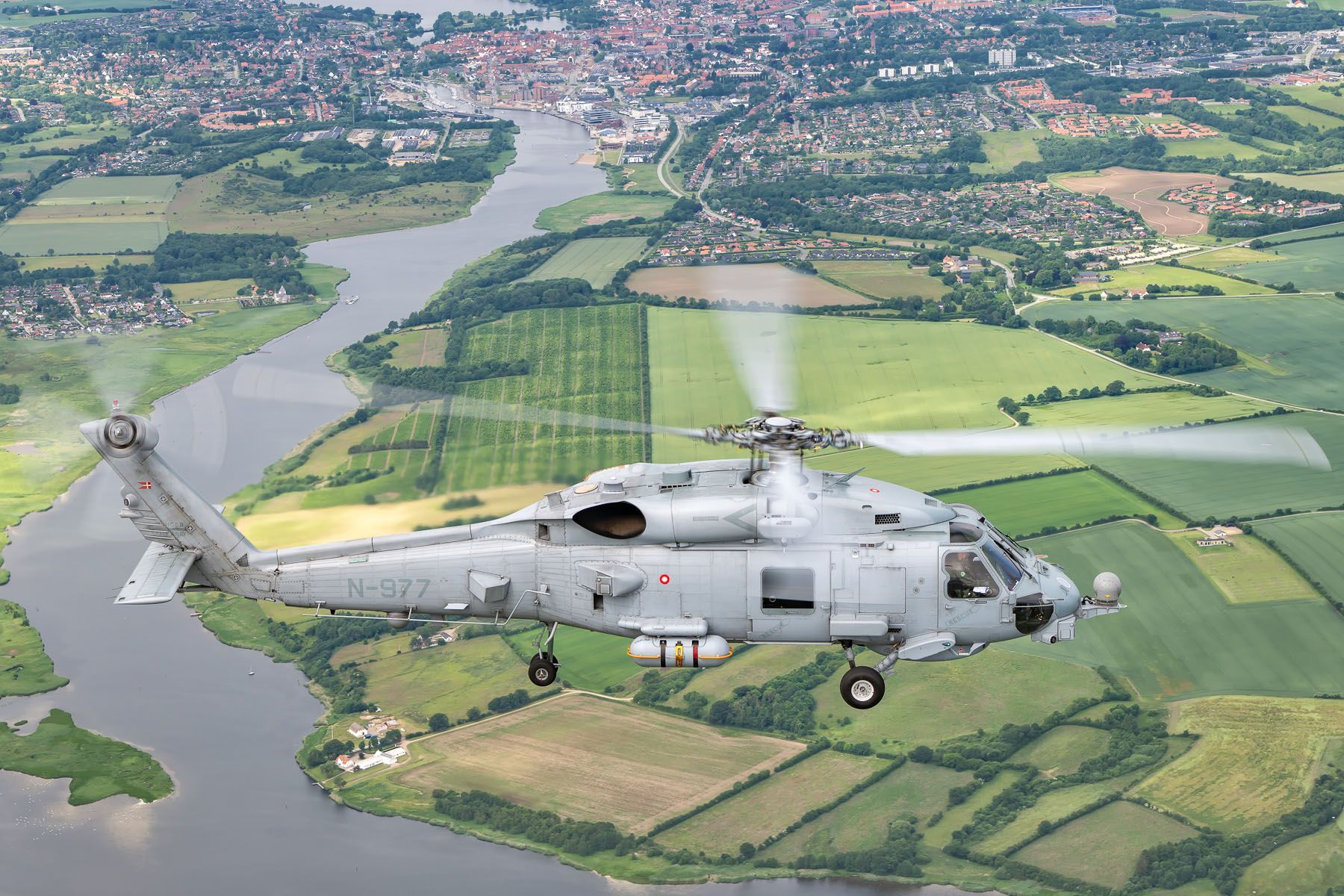
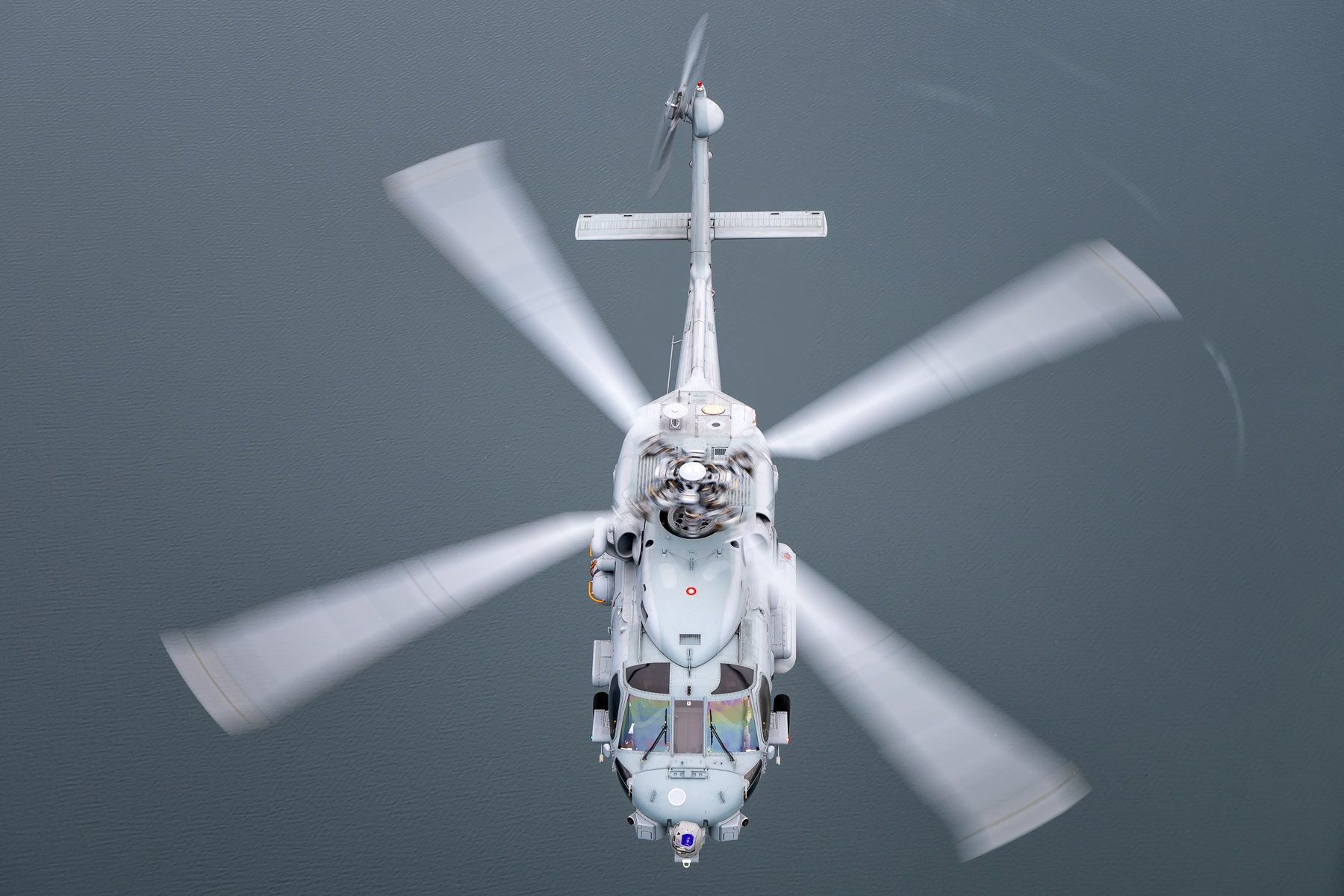
Eskadrille 723 history
Of course, today’s operations have its roots with the naval air service. Nevertheless we will have a look into the history of Eskadrille 723 as this has become the designation of the squadron following its transfer to the air force. It should however be noted that the naval helicopter unit was initially to be renamed to Eskadrille 728, a former F-86D Sabre squadron that was deactivated at Skrydstrup in 1966. Instead it was decided to tag the nameplate of 723 on it, a squadron that had disbanded just a few years back.
Eskadrille 723 was established on 8 January 1951 at Karup as part of the 3. Luftflotille. Here it received 20 Gloster Meteor F Mk 4 fighters and a handful of dual-seat T Mk 7 trainers, Denmark’s first jets. In 1952 the unit moved to Aalborg and replaced their older Meteor variant with 20 NF Mk 11 night fighters.
Through the decades, newer jets replaced older types. In 1959, North American F-86D Sabre all-weather fighters entered service until the first Lockheed Starfighter arrived on the scene. Supplied under the Mutual Assistance Program, the Royal Danish Air Force would receive 25 (Canadair-built) F-104G all-weather fighters and four TF-104G two-seaters for both Eskadrille 723 and 726 at Aalborg. The first nine arrived on 23 November 1964 and from December 1964, these started replacing the F-86D with Eskadrille 723. The official handover however did not take place until 29 June 1965. To augment the fleet, 15 former Royal Canadian Air Force CF-104 and seven dual-seat CF-104D Starfighters were bought from Canada in a contract signed on 17 September 1971. The two-seaters were delivered in 1972 while the CF-104s entered service between 1973 and 1976. Before delivery, the aircraft were fitted to Danish standard at Aalborg.
Then, Starfighters went, Fighting Falcons came. In March 1984, Eskadrille 723 became operational on the F-16A and -B as the third unit with this type within the Royal Danish Air Force. When the F-16 fleet underwent the Mid-Life Update, Eskadrille 723 became the lead-in squadron for the MLU programme in 1997/98. However its time with the updated F-16AM/BMs would be short. For budgetary reasons, Eskadrille 723 was disbanded on 8 January 2001 and its aircraft and crew transferred to sister unit Eskadrille 726.
Before talking about the reactivation of Eskadrille 723 as helicopter unit, first a bit on the Danish Lynx history (an extensive Lynx article can be found here). On 6 June 1980 the first three of eight Mk 80s were handed over to the Søværnets Flyvetjeneste. Two Mk 90s were acquired and delivered in 1987 as attrition replacements while a former Argentinean Mk 23 was obtained from Argentina for ground instruction and spares. Between 1991 and 1994, all were upgraded to Mk 80A/Mk 90A standard.
Eight new airframes were bought from GKN-Westland in 1997 for an upgrade of the fleet to Super Lynx Mk 90B (although Denmark refers to these still as Lynx instead of Super Lynx), putting the old systems including the Seaspray Mk 1 radar into the new airframes. New construction numbers were allocated to these frames, but they retained the old serial numbers. The first Mk 90B was delivered on 1 November 2000 while the last conversion did not rejoin the fleet until 1 February 2008. The upgraded Lynx helicopters now equipped the Søværnets Helikoptertjeneste, as this unit was renamed as such on 1 January 2004 when the squadron moved from Værløse to Karup.
Under the Defence Agreement 2005-2009, it was initially decided to further update the Lynx fleet with various new avionics and systems. Instead, Denmark then looked into buying some 10-12 replacement helicopters. This ultimately resulted in the acquisition of the MH-60R Seahawks.
After the implementation of the Defence Settlement 2009, the Søværnets Helikoptertjeneste transferred to the air force. The actual change took place per 1 January 2011 and simultaneously, Eskadrille 723 was reactivated and took over the SHT’s crew and Lynx helicopters. A ceremony at Karup to mark this event took place on 7 January 2011. Following the arrival of the MH-60Rs, the last Lynx helicopters were retired on 15 December 2017.
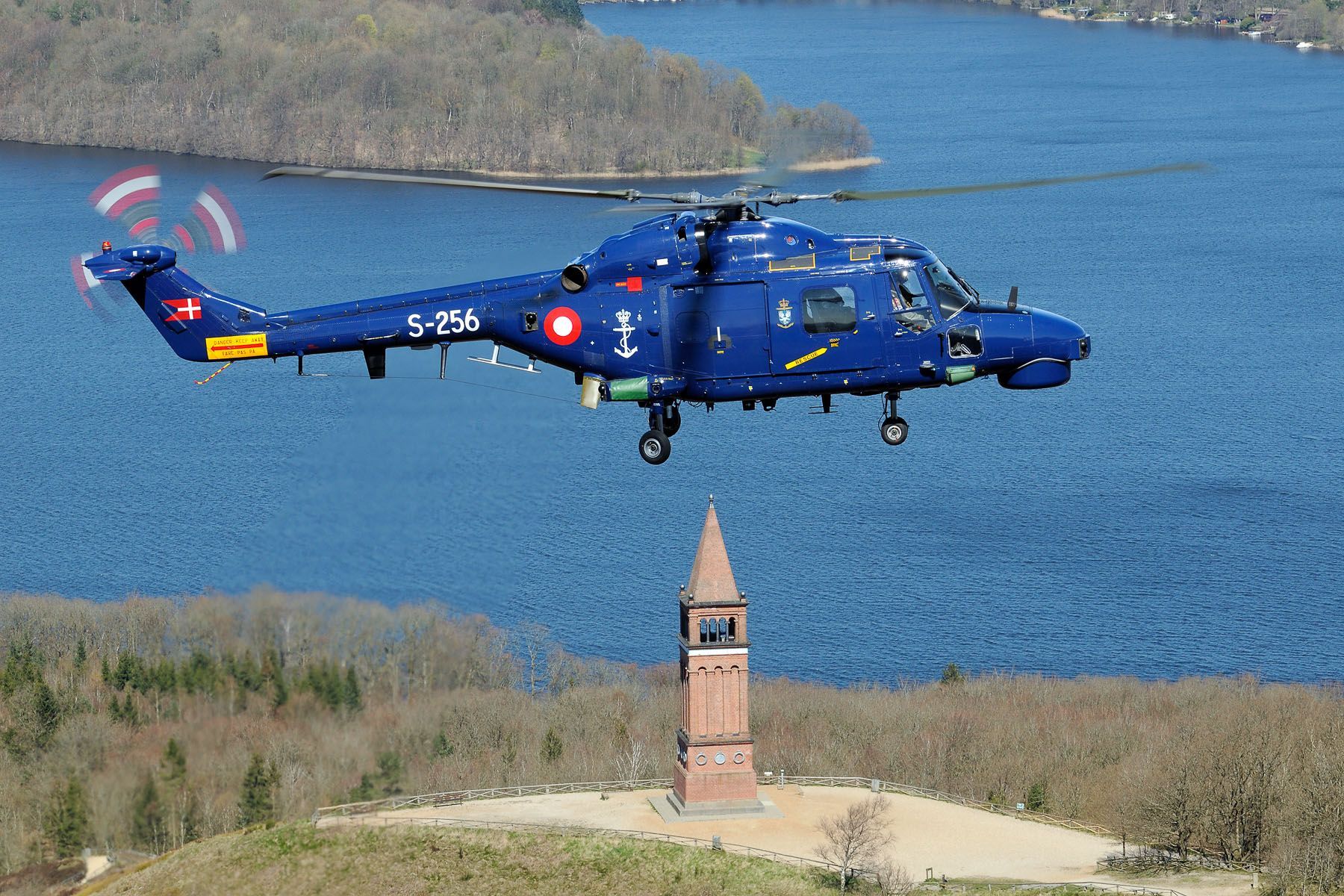
Army and police support – Eskadrille 724
With a fleet of Aerospatiale AS550C-2 Fennec light helicopters, Eskadrille 724 provides support to the army’s special forces but also to the national police and other civil authorities.
In view of military support, it closely cooperates with the Jægerkorpset (Huntsman Corps), an elite special operations force that is part of the Special Operations Command and based at Aalborg air base. These forces can both be airlifted to the action or be deployed via fast roping. Similarly, the Frømandkorpset (Frogman Corps), a maritime special operations force and also part of the Special Operations Command, can also rely on Eskadrille 724 for airborne deployment. Missions in collaboration with police units can include the search for missing persons, speed control on Danish roads or crowd control during large events.
The squadron’s current operations originate from the Hærens Flyvetjeneste or Army Aviation Service established in 1971. This Vandel-based unit operated fifteen Hughes 500M (also known as Model 369HM) helicopters and a handful of Saab T-17 Supporter light aircraft in the army observation role. To give this aviation branch of the Danish Army some teeth, twelve AS550C-2 Fennec helicopters were bought in 1987 and delivered from August 1990, primarily for an anti-armourrole. For this, two pairs of TOW missile launchers and a roof-mounted HeliTOW sight containing direct view optics and a laser rangefinder were fitted.
After the decision to concentrate all rotary wing operations within the Helicopter Wing to be established at Karup, this unit relocated here from Vandel to become Eskadrille 724 with the Royal Danish Air Force. This squadron was reactivated on 7 August 2003. The characteristic egg-shaped Hughes helicopters were officially retired on 12 September 2005. The army’s T-17 Supporter scout planes had already been assigned to other units at an earlier stage. Due to a change in roles for Eskadrille 724, the Fennec’s anti-armour task was dropped and its associated equipment removed.
Like their sister squadrons with the Helicopter Wing Karup, also Eskadrille 724 has seen international deployment. Already prior to the reactivation of the squadron, three Danish Fennecs went to North-Macedonia in 2002 for operation Amber Fox. In December 2005, three were deployed to support the Danish forces in Iraq, followed by another detachment of four Fennecs as a replacement for Danish ground forces that were withdrawn from that country. This detachment returned home in December 2007. To support ISAF, four Fennecs went to Afghanistan on 11 June 2008 and based at Camp Bastion in the Helmand province. A bit closer to home, one helicopter was based at Rota in Spain in July 2022 to assist in the local Frontex mission.
Of the twelve Fennecs delivered, one has been taken out of active service. This airframe now serves a ground instructional role.

Eskadrille 724 history
Along with Eskadrille 723, this squadron was established at Karup on 8 January 1951 but equipped with 20 more advanced Gloster Meteor F Mk 8s and a few T Mk 7 trainers. It also moved to Aalborg in June 1952 where it continued to operate the daylight Meteor fighter.
On 3 July 1954, Denmark signed a contract for 30 Hunter F Mk 51 aircraft, a variant based on the F Mk 4 with more powerful engines, greater fuel capacity and underwing hard-points for additional armament. Deliveries took place between 31 January and 10 September 1956 and all entered service with Eskadrille 724. To assist in pilot conversion, a pair of two-seat T Mk 53s were ordered on 31 December 1956 and delivered in 1958. The squadron relocated briefly to Karup in 1958, and one year later, in 1959, it moved to Skrydstrup. Here, more duals were added to the fleet in 1967 by acquiring two T Mk 7s from the Royal Netherlands Air Force.
As per the Defence Act dated 26 April 1973, it was decided to stand down Eskadrille 724. On 30 April 1974, the last Hunter was flown to Aalborg for retirement after which the squadron was deactivated. The Hunters were subsequently stored and offered for sale.
Eskadrille 724 was reactivated at Karup on 7 August 2003 and took over all crew and assets from the Hærens Flyvetjeneste. This army aviation service had previously moved over from Vandel since this base closed its doors that same year. Since 1 January 2006, it is part of Helicopter Wing Karup.
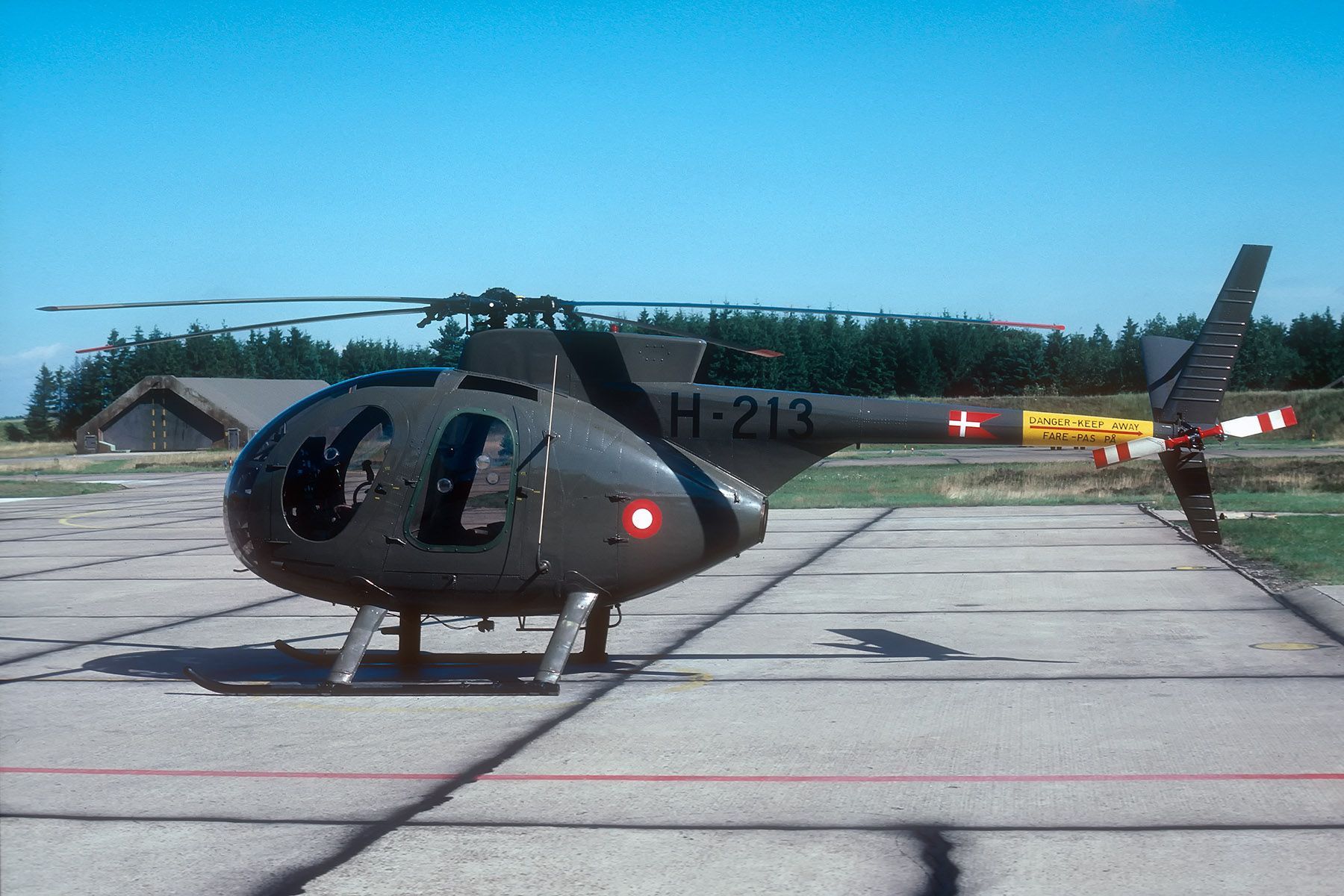
Flyveskolen
For future Royal Danish Air Force pilots, the Flyveskolen or Flight School forms an essential first step in their flying career. Here, the Saab T-17 Supporter is used for elementary flying training. After a successful completion of this phase, they will move on through the education pipeline, ultimately entering operational service in case all tests have been passed.
In 1975, Denmark bought 32 Saab T-17 Supporters, not only for the Flyveskolen but also for army observation duties and liaison flights at the various air bases. At that stage, the Flyveskolen was based at Avnø but due to this base’s closure, the school moved to Karup on 1 February 1993.
In the first decade of this century, the cockpits of the remaining aircraft were modified. The aircraft received a Garmin GPS and a new attitude indicator, and a standby horizon was added. Furthermore, the stores panel was deleted. By means of this panel, external stores to be carried on two wing-mounted pylons could be selected and fired, however the Royal Danish Air Force has never used this feature. A new emergency electrical bus was built in, able to power essential instruments and systems from a battery for two hours, since the T-17 had previously suffered several generator failures. Finally, strobe lights were added to the wing tips.
Instructors of the Flyveskolen form the four-ship Baby Blue team that has displayed at various airshows throughout Europe. In 2025, the T-17 will see its 50th anniversary with the Royal Danish Air Force. Despite its age, the Supporters will soldier on as training platform as a successor has not been selected yet.
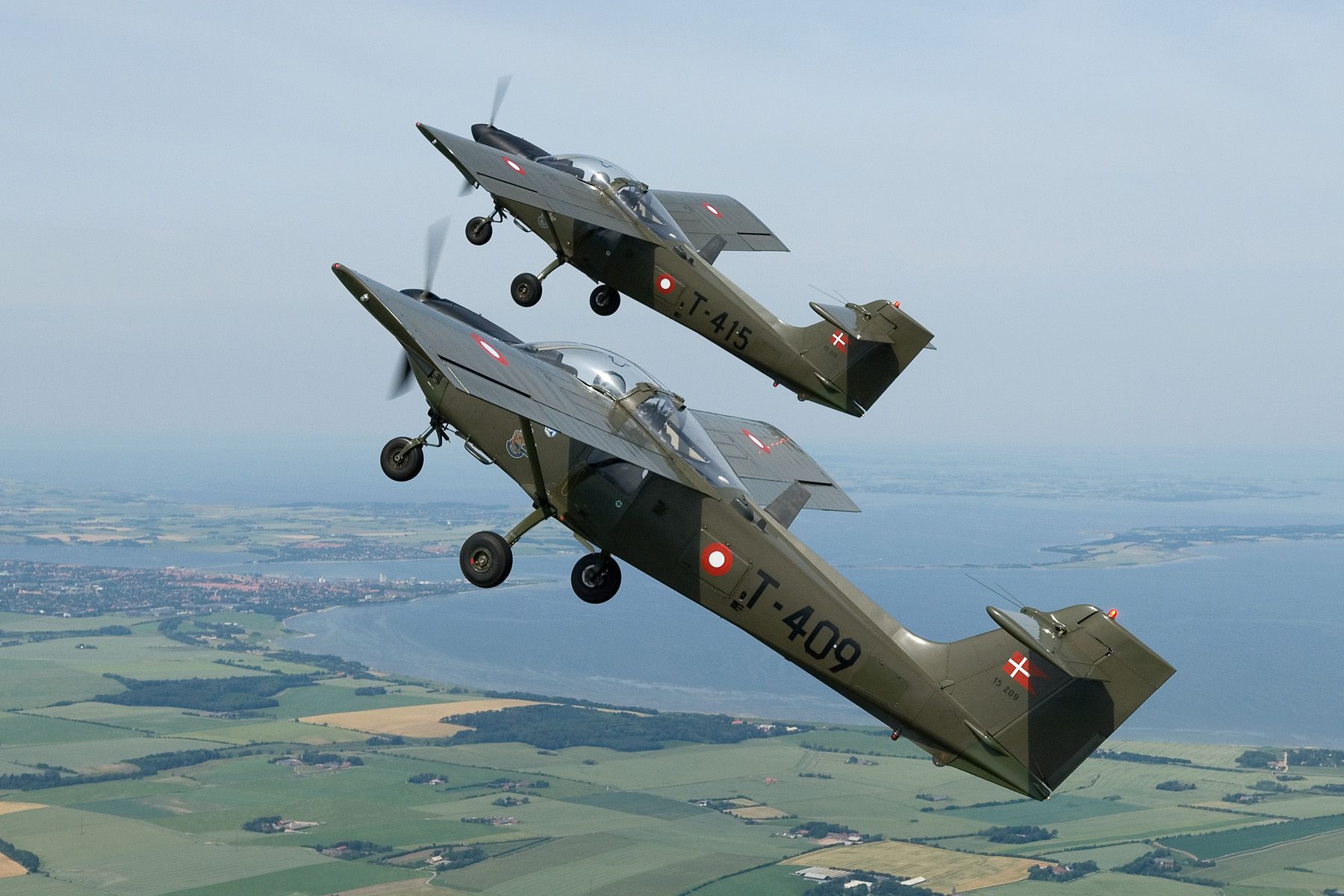
Flyvestation
We are concluding this report with a bit of history on the base itself. The air station was established by the German Luftwaffe soon after the Nazis invaded Denmark in 1940. Called Fliegerhorst Grove, it was initially used for offensive operations against the United Kingdom. Later in WW II it became an air defence base. After the war had ended, the Danish Ministry of the Interior used the base as a camp for approximately 22,000 German refugees until 1949.
In 1950, following the merger of the Army and Navy Air Force into the new Royal Danish Air Force, the large base at Karup would become the major location for the Flyvevåpnet. On 8 February 1951, the base was officially renamed to Flyvestation Karup.
Several squadrons were then established here in the 1950s, some of these relocating to other bases. Long-time residents would be both Eskadrille 725 and 729, both starting operations with Republic F-84E/G Thunderjets of which no less than 244 would eventually be taken on charge by the air force.
Eskadrille 725 was a dedicated ground attack squadron. Following retirement of their Thunderjets in 1961, it took delivery of some 20 North American F-100D/F Super Sabres. Eskadrille 729 transformed into an aerial reconnaissance squadron, and received 23 Republic RF-84F Thunderflashes for this task from 1957.
In 1968, Denmark purchased 46 Saab 35XD Draken aircraft with deliveries taking place between September 1970 and May 1972. Of this order, 20 F-35 ground attack aircraft joined Eskadrille 725 while sister squadron 729 received 20 RF-35 photo reconnaissance variants. Six TF-35 two-seat Drakens were shared for training purposes. An additional five TF-35s were ordered in 1975.
In 1980, the Draken was upgraded with a Weapons Delivery and Navigation System (WDNS) that included a laser range finder, a computer for calculating the aim, a head-up display and an inertial navigation system. This significantly improved the ground attack capability of the F-35 Draken. To make room for the range finder, these aircraft received a new nose similar to that of the RF-35.
The Drakens were destined to be retired in the mid-1990s but after the Cold War ended by the start of that decade, these were taken out of service prematurely without replacement. Eskadrille 725 stood down by late 1991 while Eskadrille 729 disbanded on 31 December 1993.
Flight operations from Karup would however continue with the arrival of the Flyveskolen in 1993, and as described earlier, all three military rotary wing units relocated to Karup in the years to follow, ultimately forming the Helicopter Wing Karup in 2006.

Well, that concludes this piece on the Helicopter Wing Karup. Have you already checked out our similar article on the Fighter Wing Skrydstrup? Then look here if you are interested! ■
